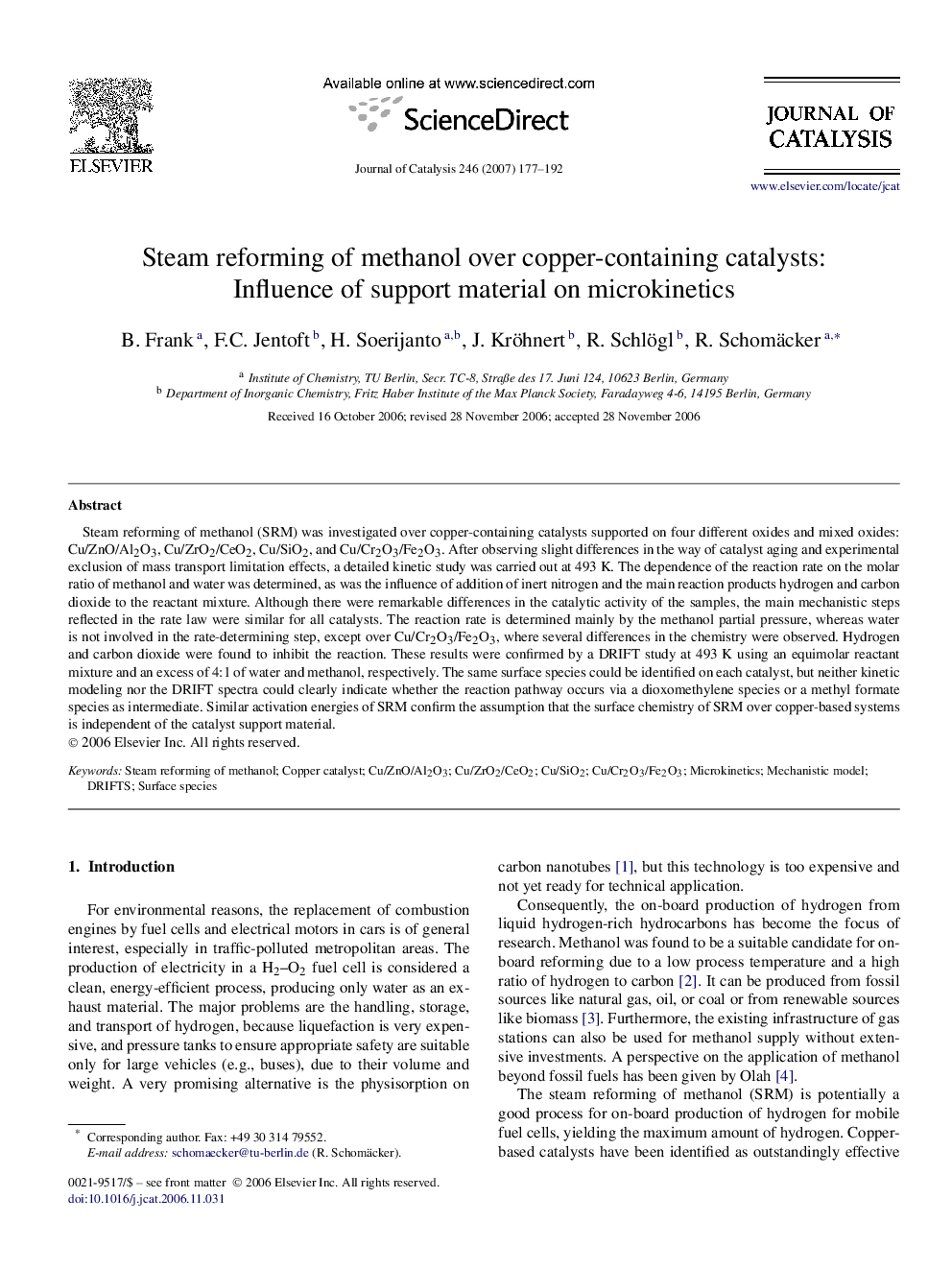| کد مقاله | کد نشریه | سال انتشار | مقاله انگلیسی | نسخه تمام متن |
|---|---|---|---|---|
| 62913 | 47662 | 2007 | 16 صفحه PDF | دانلود رایگان |

Steam reforming of methanol (SRM) was investigated over copper-containing catalysts supported on four different oxides and mixed oxides: Cu/ZnO/Al2O3, Cu/ZrO2/CeO2, Cu/SiO2, and Cu/Cr2O3/Fe2O3. After observing slight differences in the way of catalyst aging and experimental exclusion of mass transport limitation effects, a detailed kinetic study was carried out at 493 K. The dependence of the reaction rate on the molar ratio of methanol and water was determined, as was the influence of addition of inert nitrogen and the main reaction products hydrogen and carbon dioxide to the reactant mixture. Although there were remarkable differences in the catalytic activity of the samples, the main mechanistic steps reflected in the rate law were similar for all catalysts. The reaction rate is determined mainly by the methanol partial pressure, whereas water is not involved in the rate-determining step, except over Cu/Cr2O3/Fe2O3, where several differences in the chemistry were observed. Hydrogen and carbon dioxide were found to inhibit the reaction. These results were confirmed by a DRIFT study at 493 K using an equimolar reactant mixture and an excess of 4:1 of water and methanol, respectively. The same surface species could be identified on each catalyst, but neither kinetic modeling nor the DRIFT spectra could clearly indicate whether the reaction pathway occurs via a dioxomethylene species or a methyl formate species as intermediate. Similar activation energies of SRM confirm the assumption that the surface chemistry of SRM over copper-based systems is independent of the catalyst support material.
Journal: Journal of Catalysis - Volume 246, Issue 1, 15 February 2007, Pages 177–192